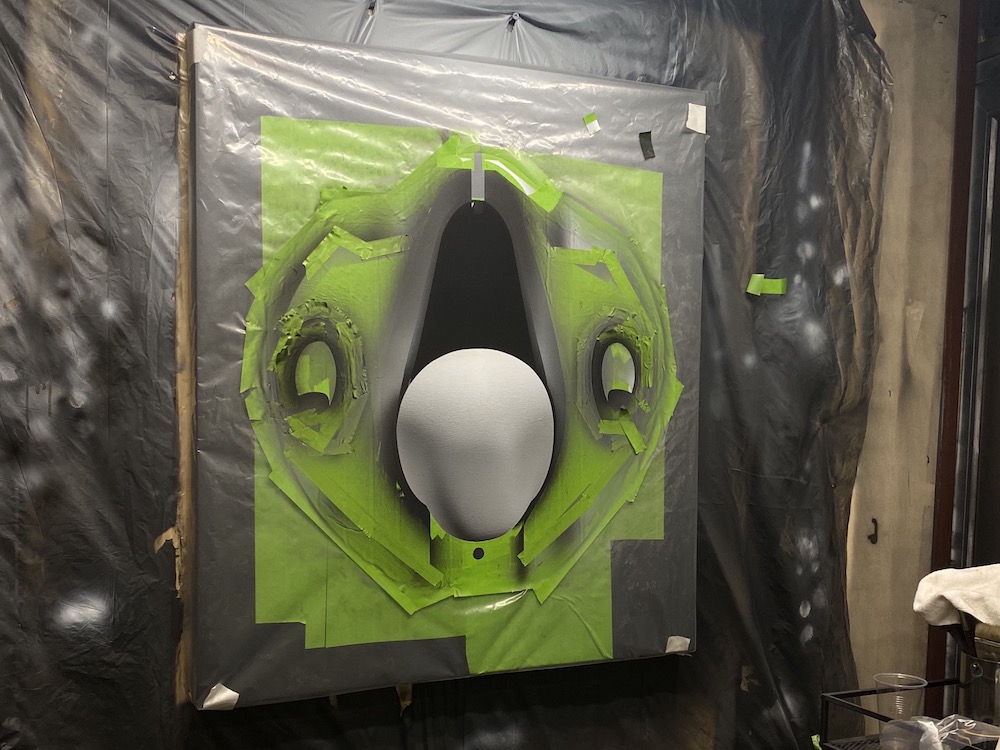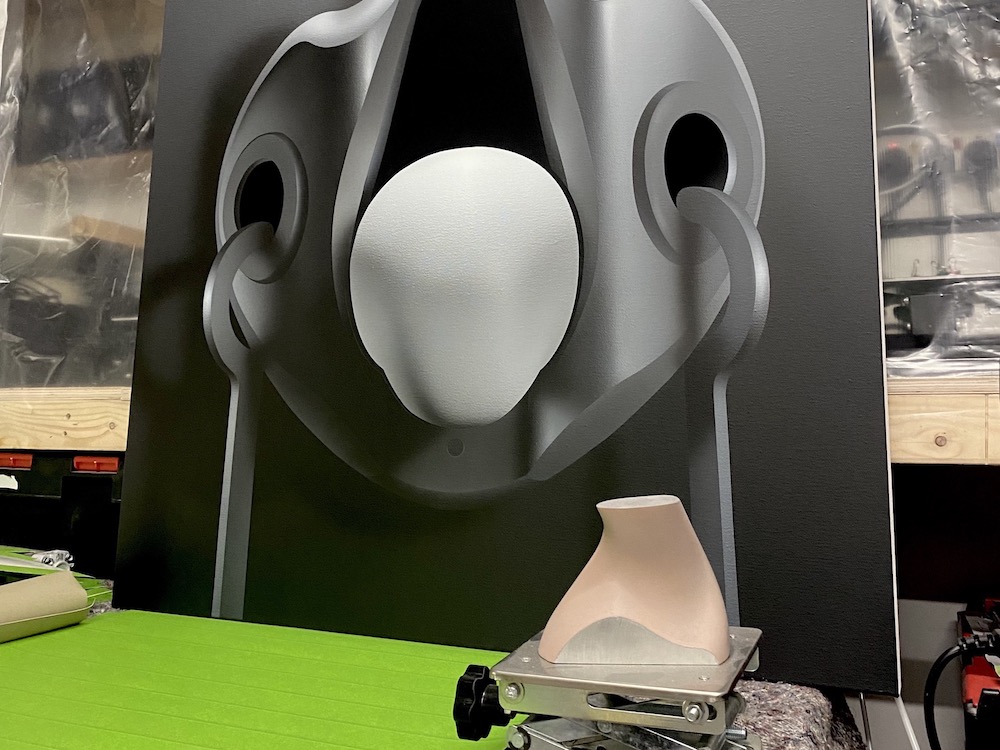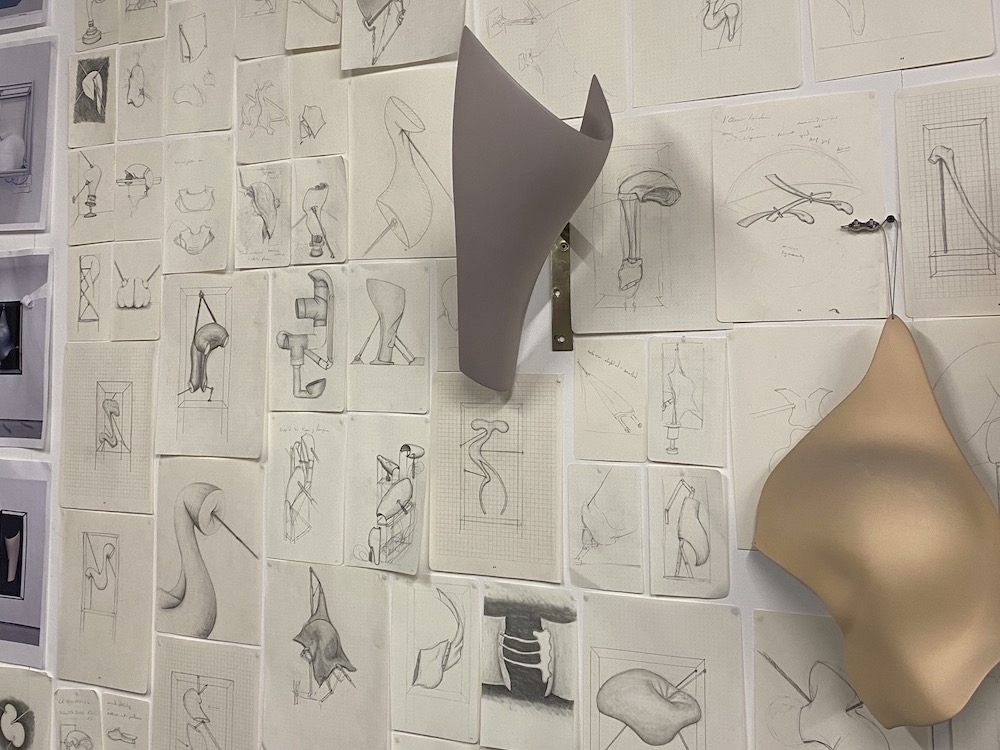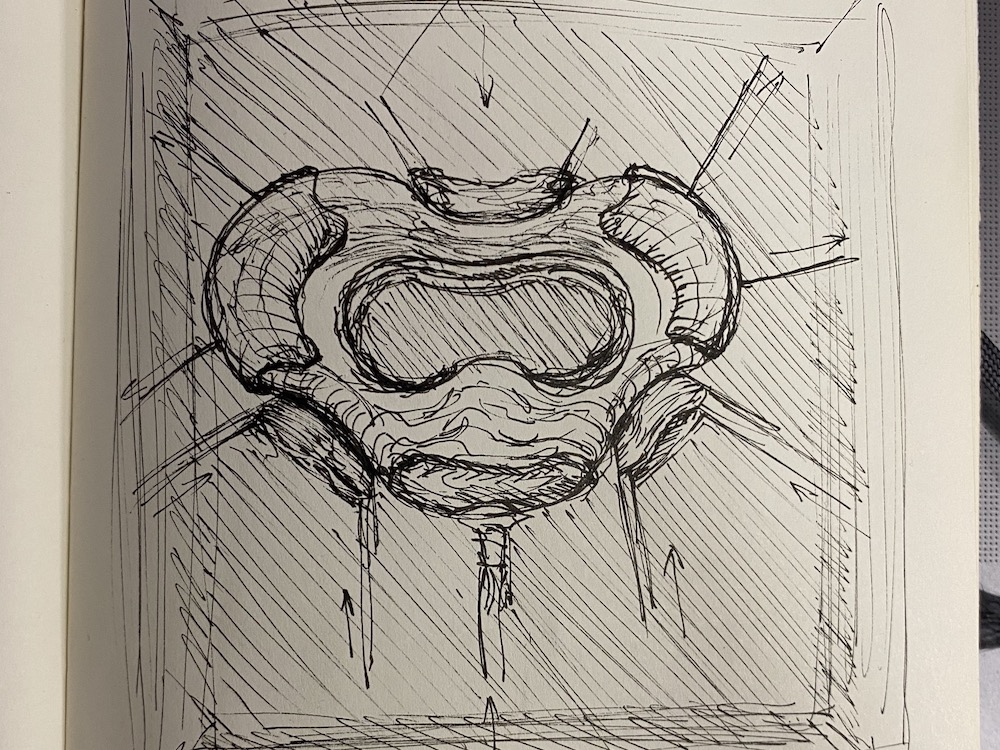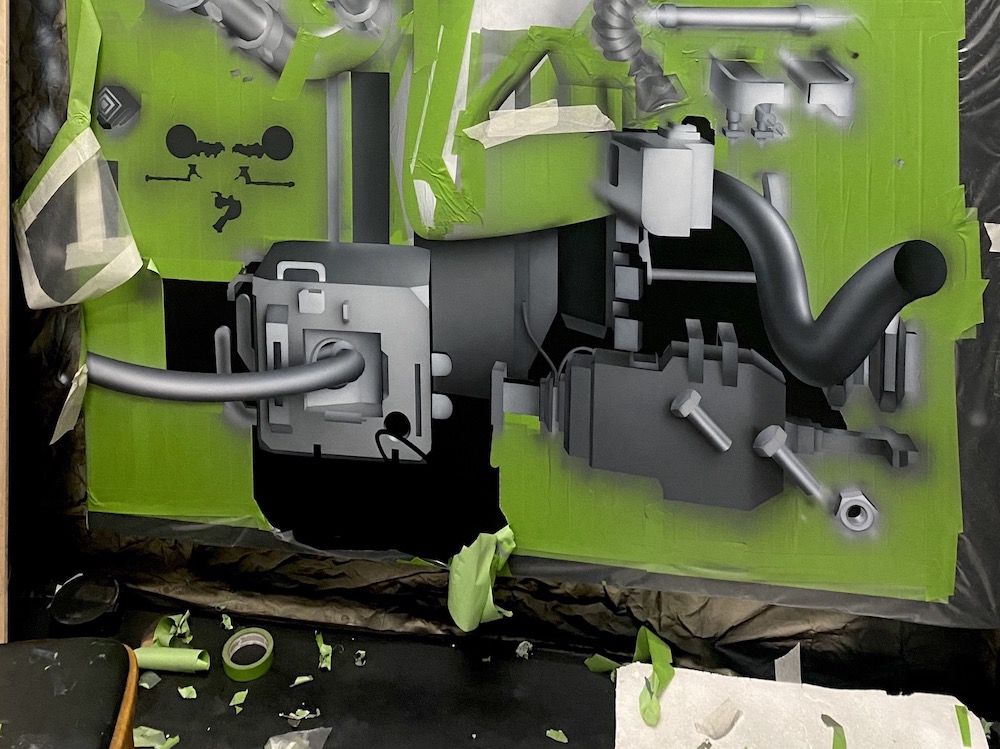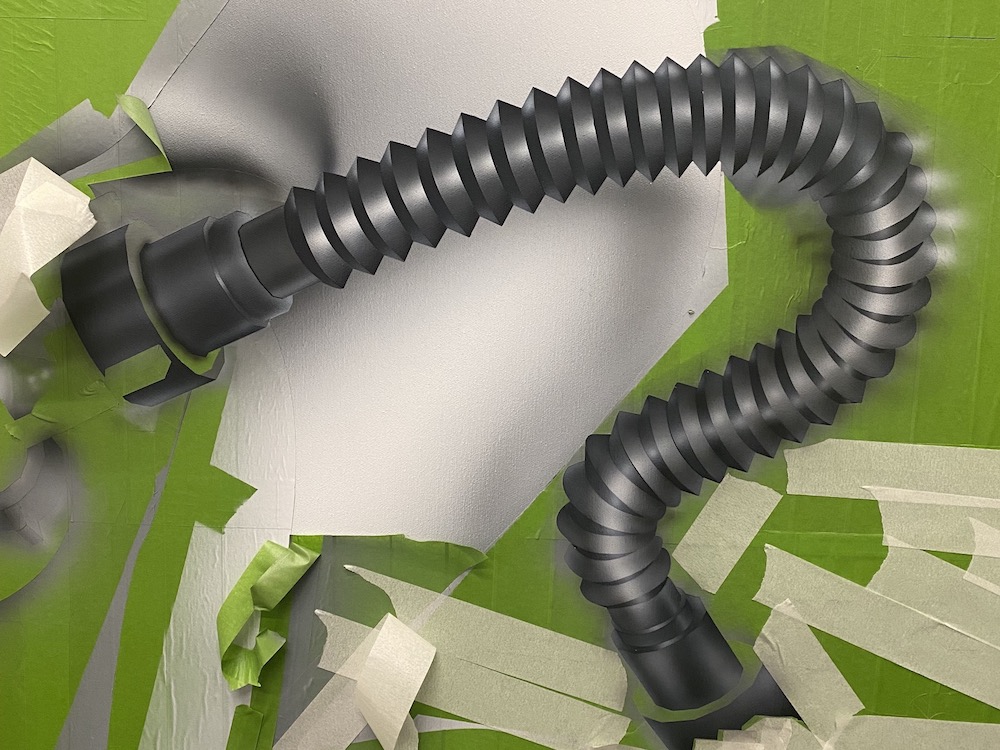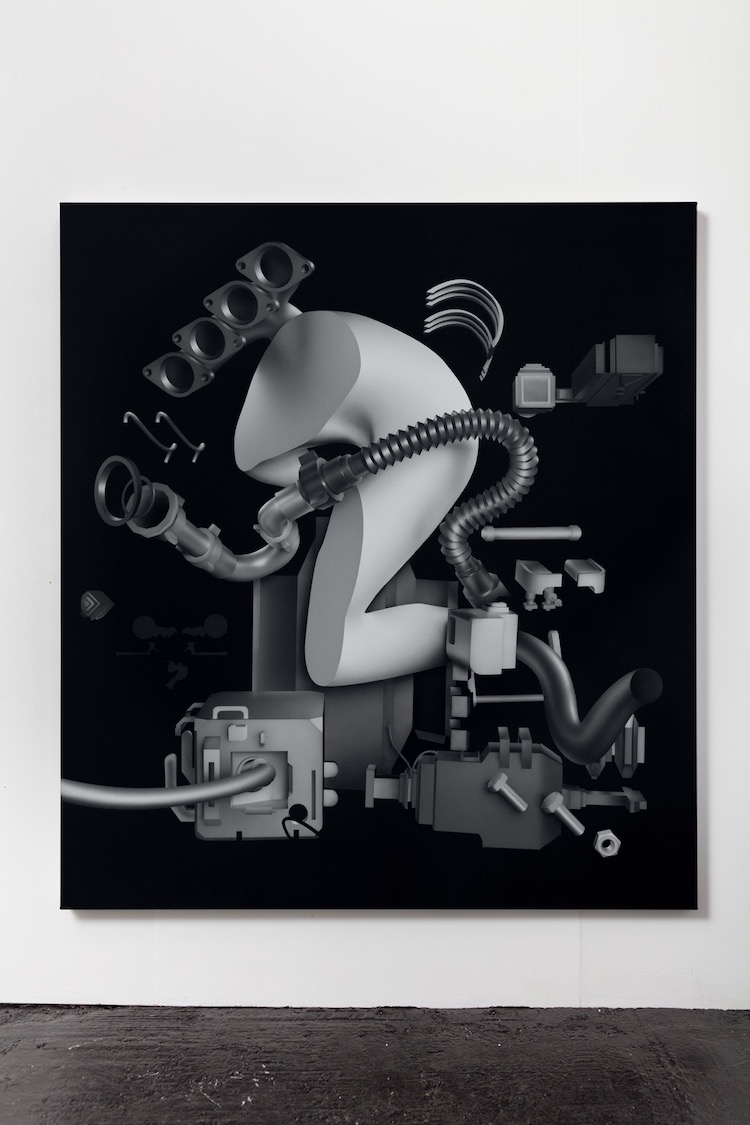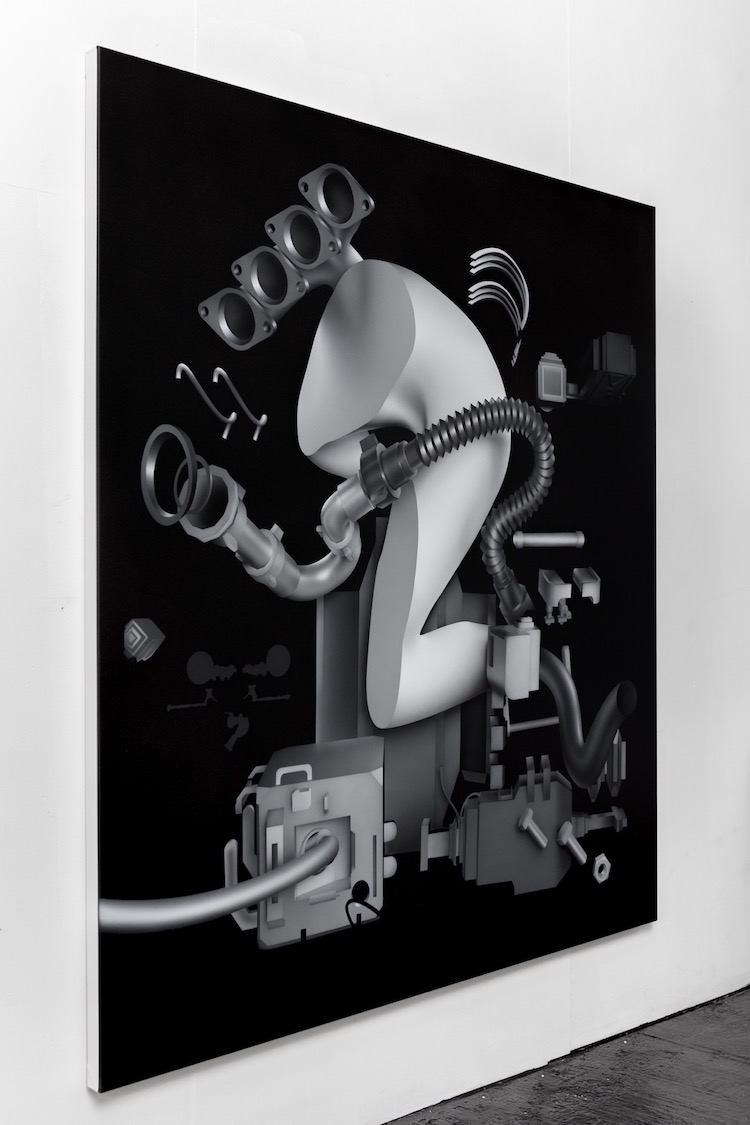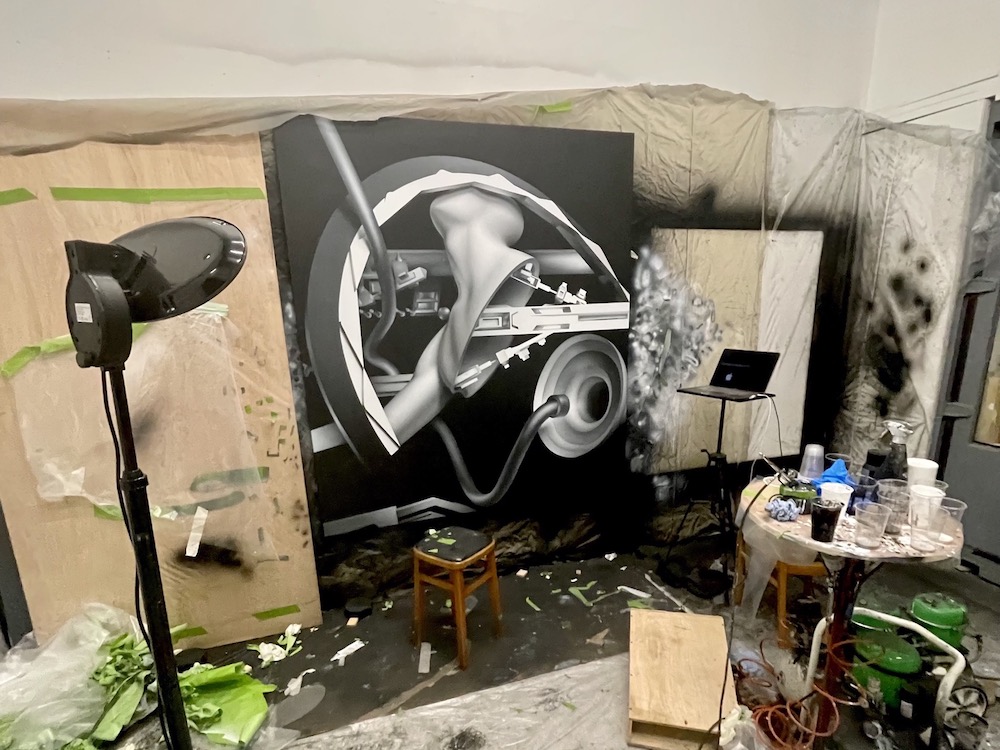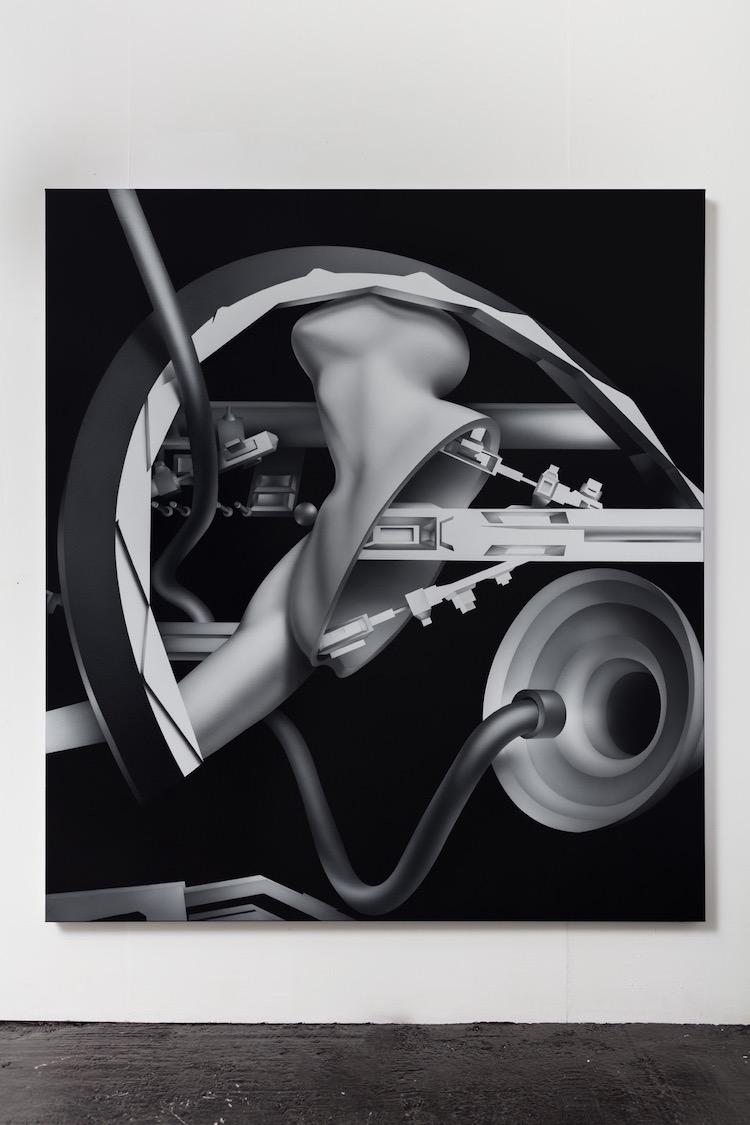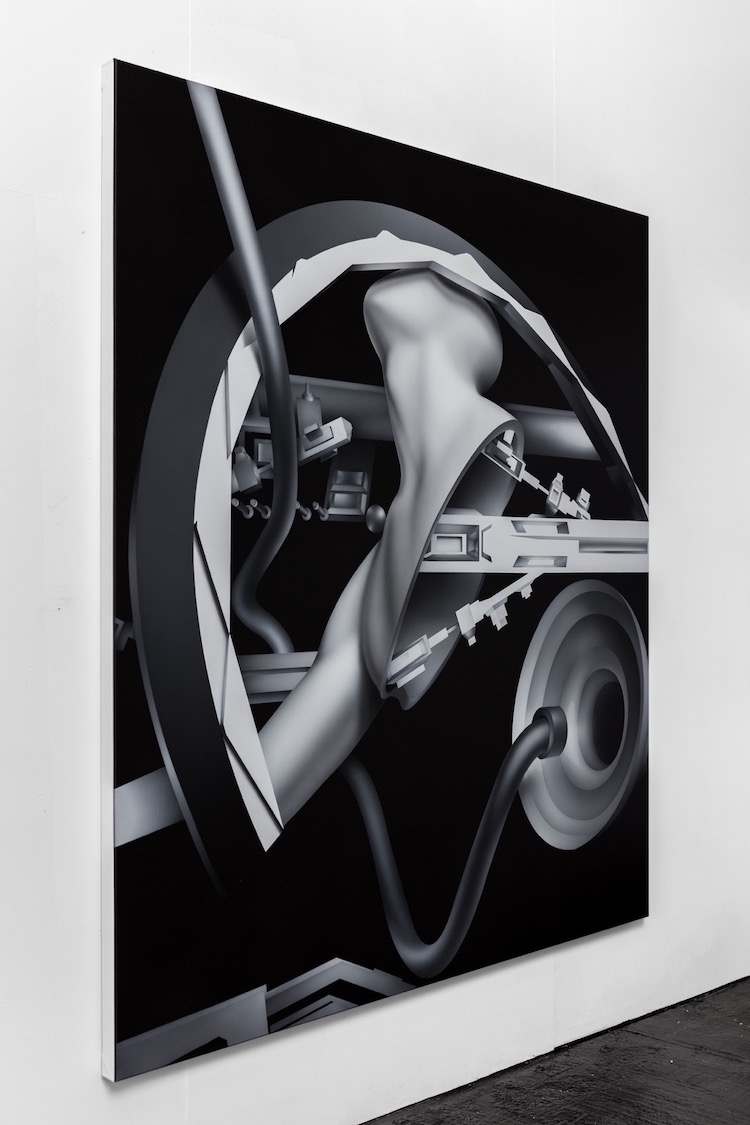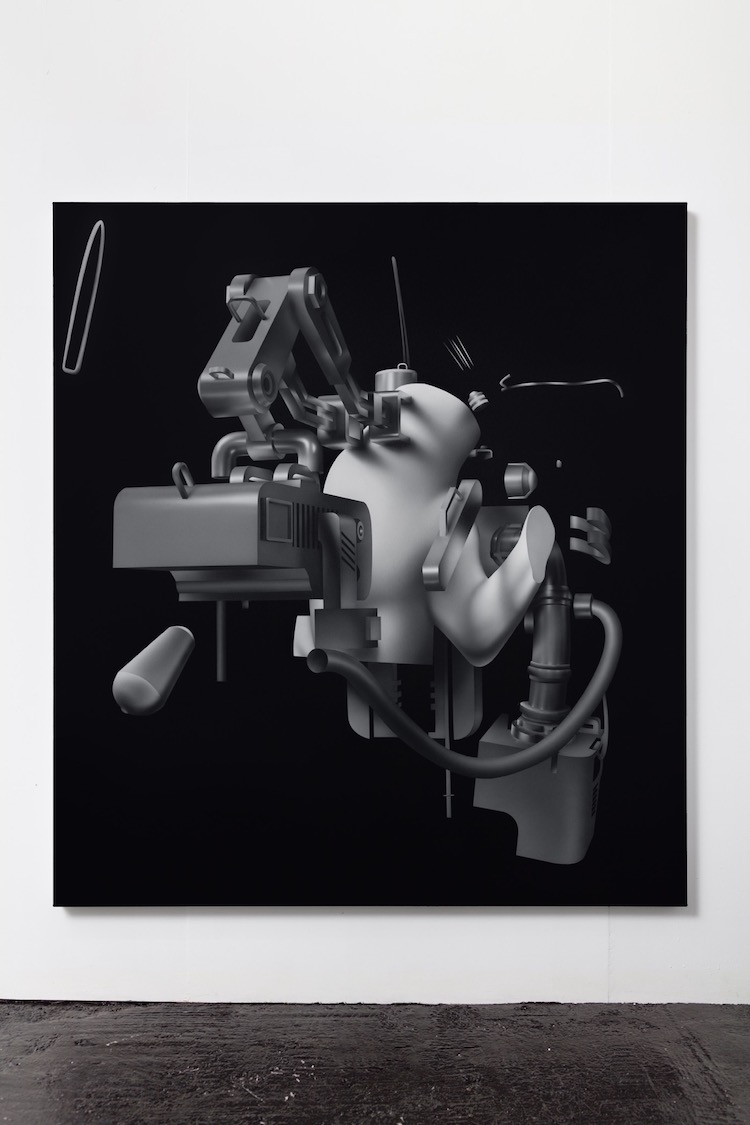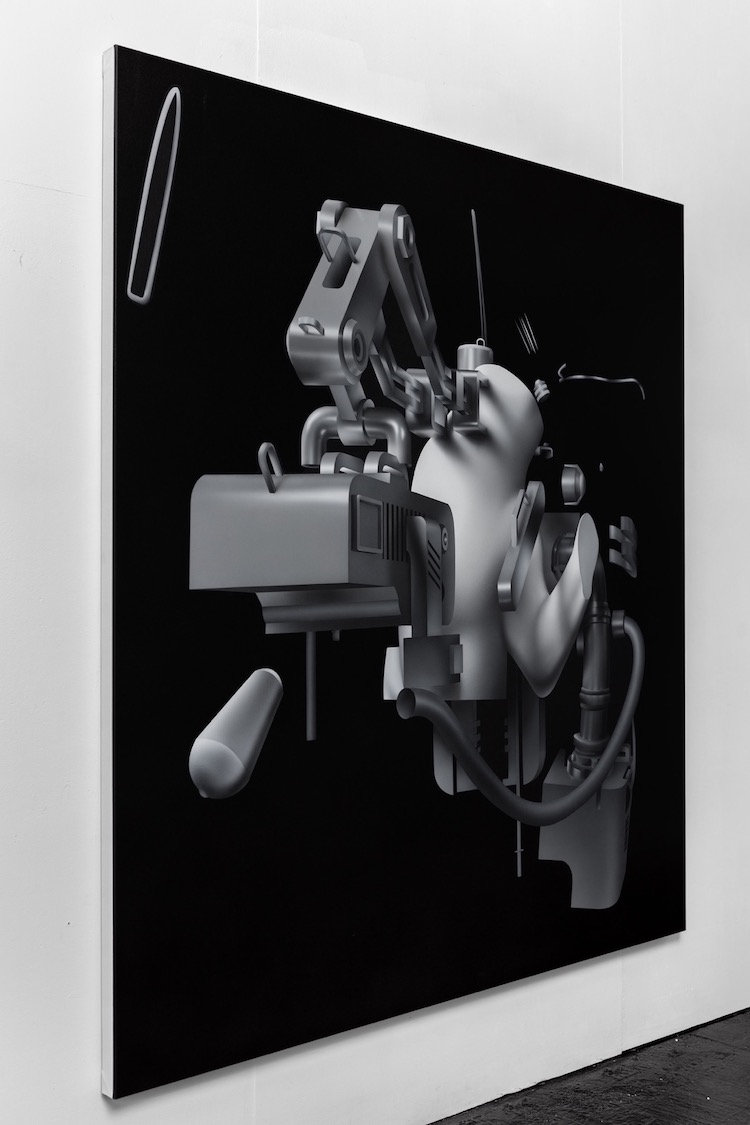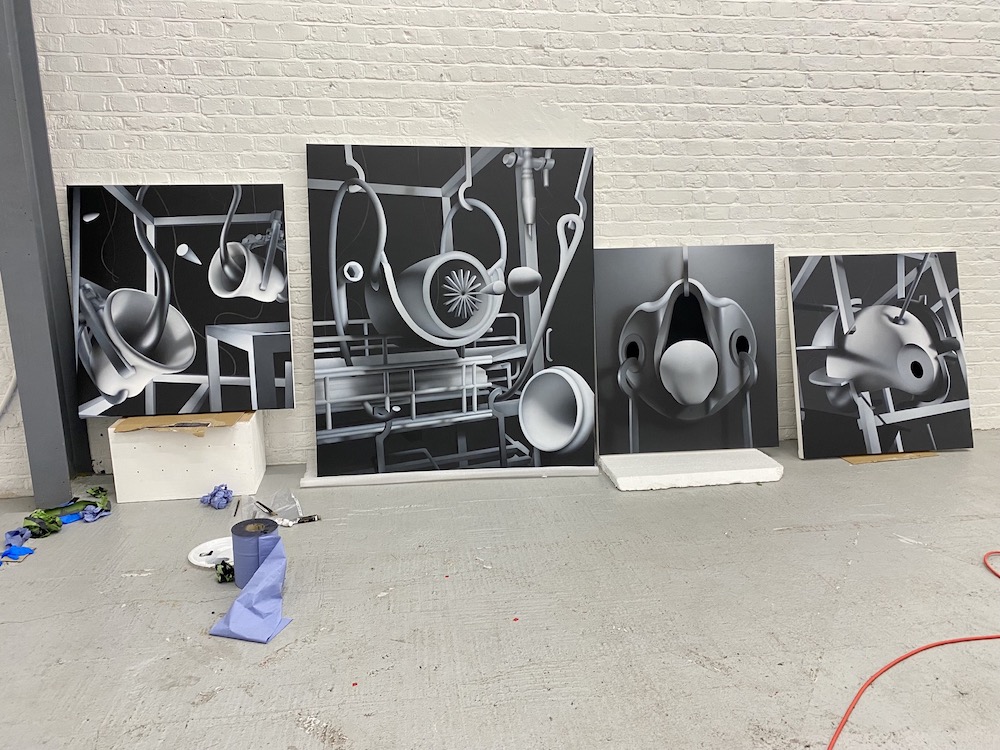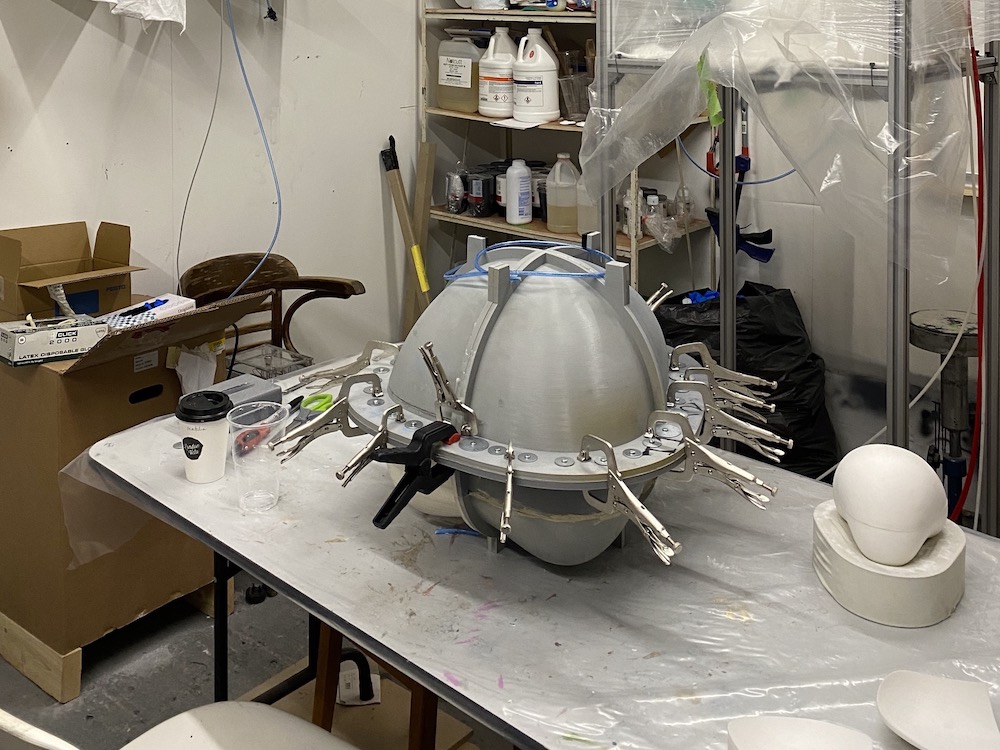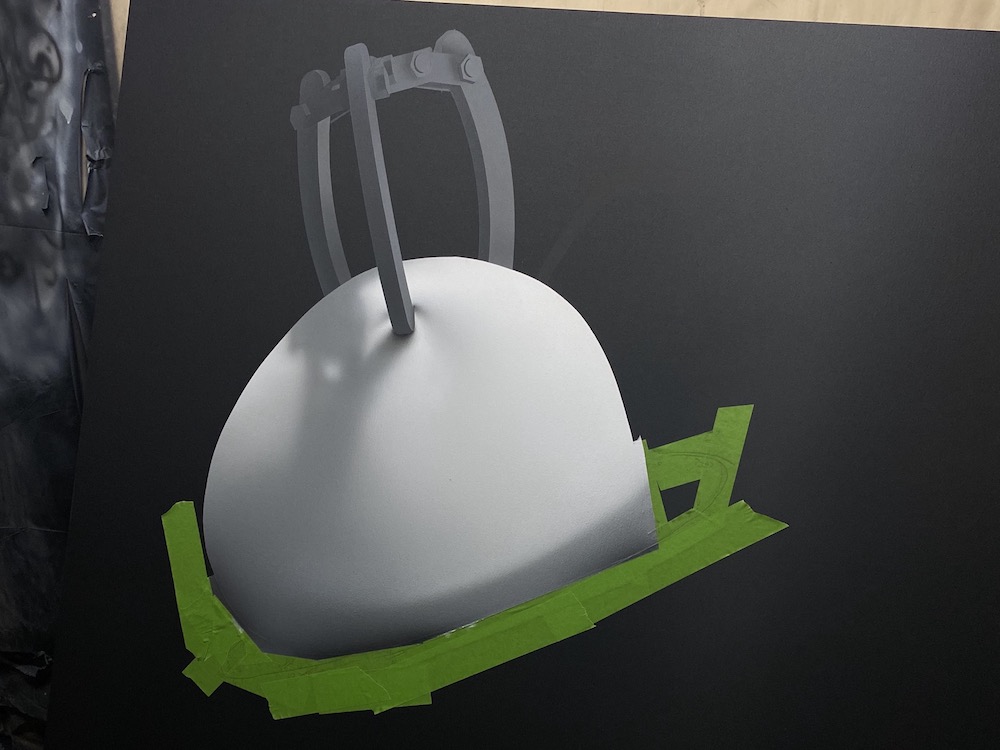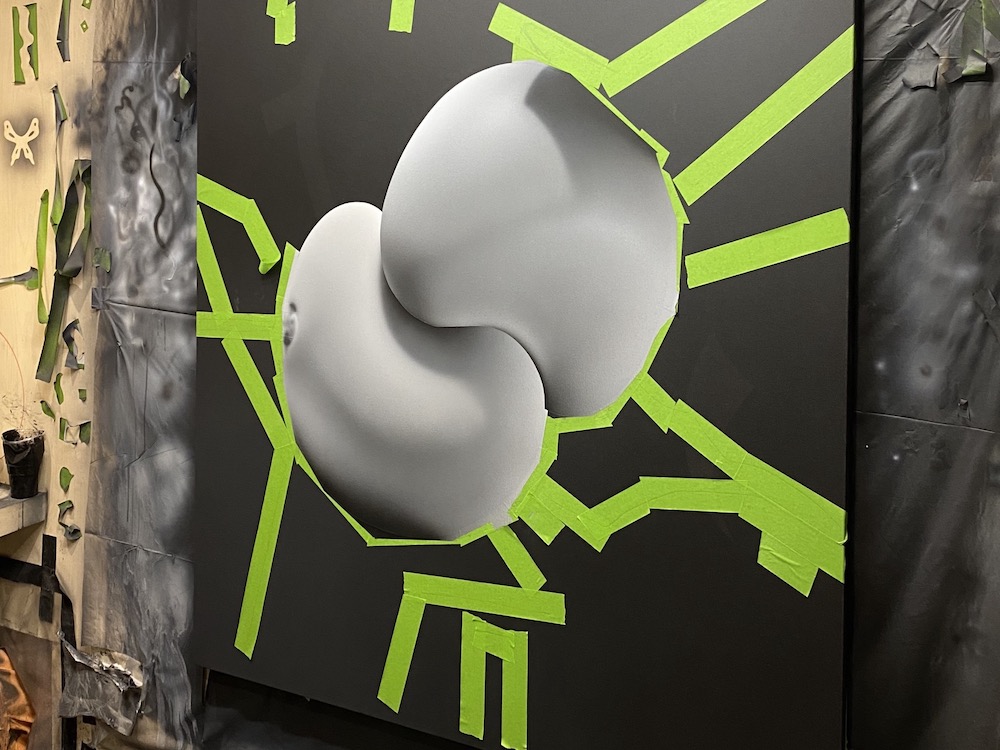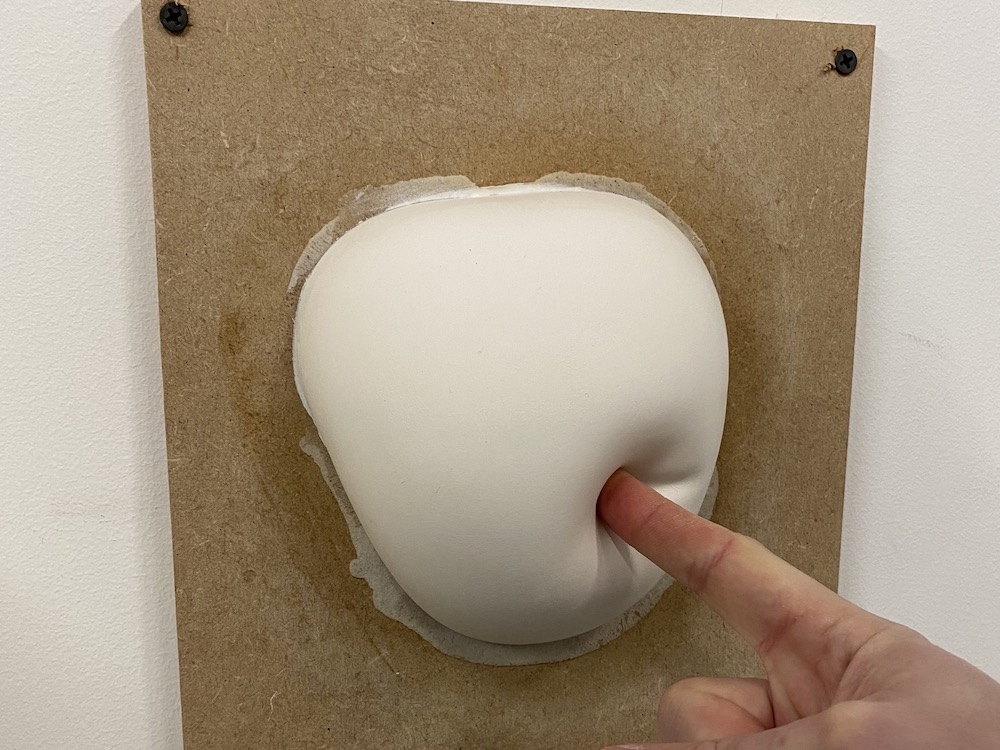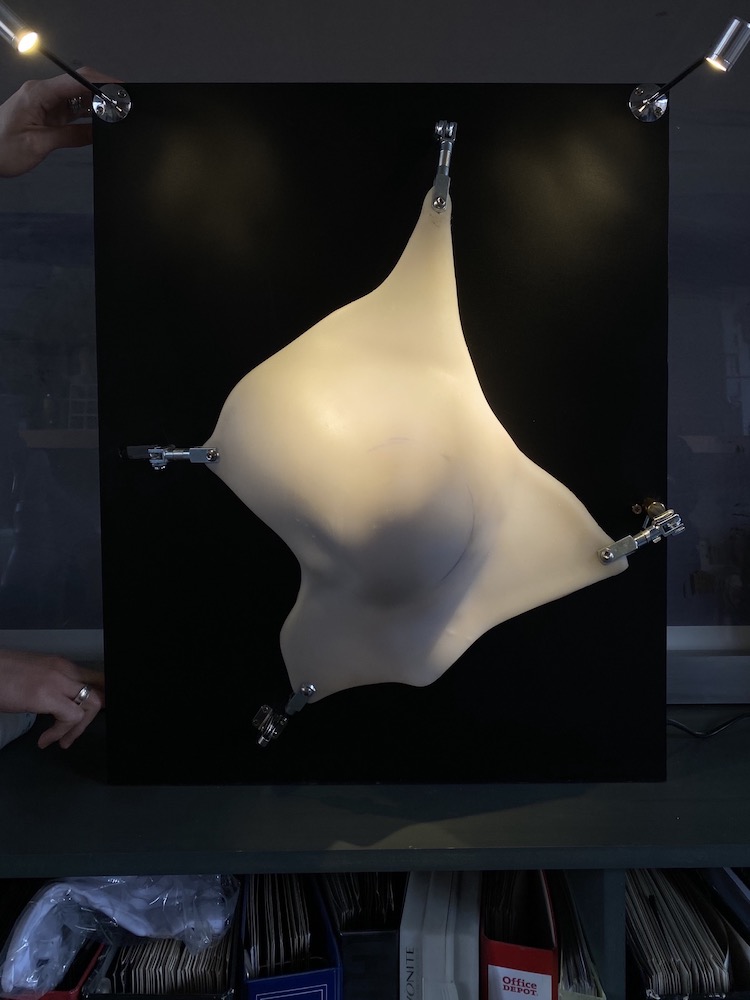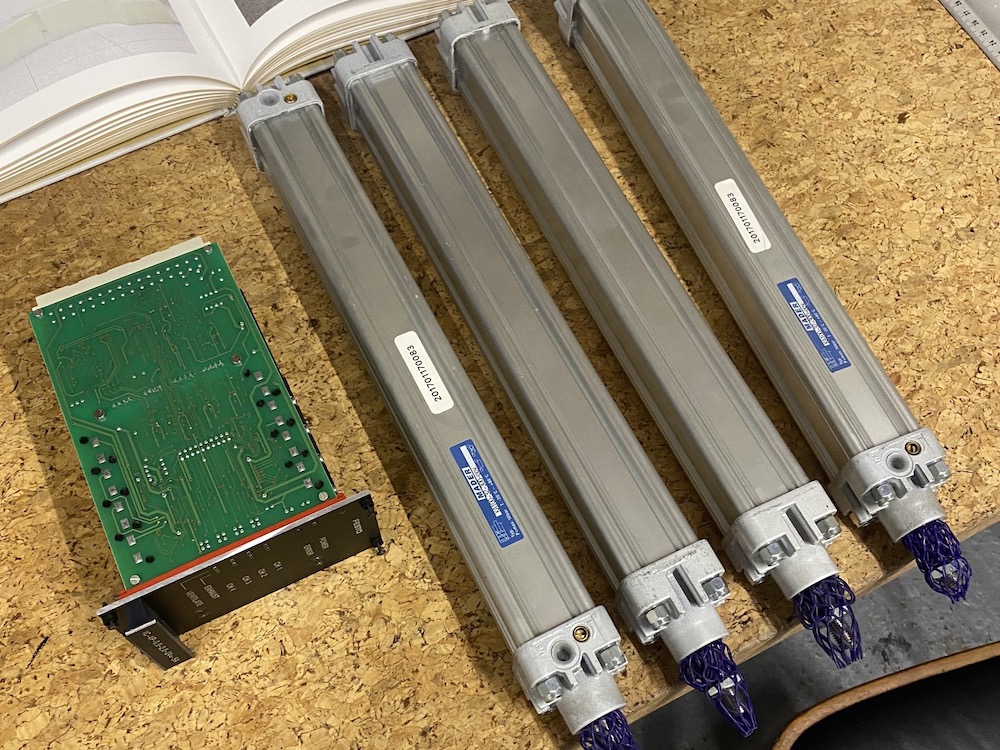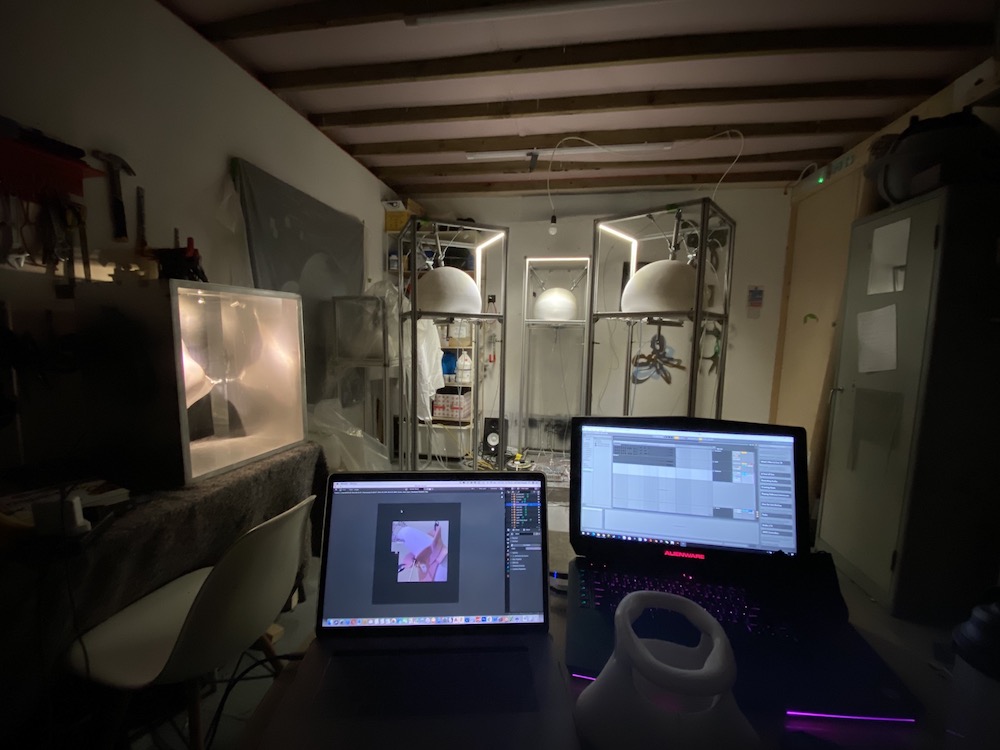A few weeks ago we got a cheeky peek into Harrison Pearce's studio and were beyond intrigued with the setup, the machinery, the work, and the action that's taking place in there. At that moment, the artist was finishing the body of work for his upcoming London solo debut with Carl Kostyál gallery which is meant to expand the idea of anthropomorphic qualities that exist in machines around us. And while this sounds awfully simplified and incomplete, we feel it gives a good starting point to describe the work that comprises Host.
“The work of Harrison Pearce is an existential paradox. Using analytic philosophy as his cipher, Pearce traces the evolution of the human body and its ideological representation in a technophilic society that invents ever-newer ways of probing, prodding, unpicking and deconstructing it through an unwavering belief in empirical knowledge,” Alice Bucknell stated back in 2020, nicely summarising the complexity of concepts which inform Pearce's practice. Although known primarily for his kinetic sculptural and sound installations, the recent years of lockdown and limited movement prompted the artist to resort back to painting and therefore expand his exploration and concepts. Having the ability to construct imaginary machines that go beyond what's physically possible, while having the same thought process that informs his sculptural practice, the artist was simultaneously more determined to reduce his sculptural work to even more minimal aesthetics, accentuating their uncompromising brutality and inherent simplicity.
It is the unique relationship between humanity and the cold, exact, and artificially produced objects that are the focus of Pearce's exploration. Often contrasting the mechanical shafts against balloon-like forms, he is encapsulating both the endless trust and the high risk we're taking when allowing the machines to impact our life. So, curious to hear more about how this exploration developed to this point, as well as learn more about the ideas behind the work and different aspects of his practice, we got in touch with the artist and had our minds blown with the way these sterile, melancholic, monochromatic ideas are conceptualised and realized.

Sasha Bogojev: Looking at your studio, I'm super intrigued about what I'm actually looking at? What are all the machines, moulds, sculpture, printers, materials?
Harrison Pearce: My studio tends to change function quite frequently. It’s a relatively small space and I work in several quite different ways so I’m often adapting it for new work. My studio practice so far has largely included painting, design, 3D printing, mould making, casting, engineering, electronics and sound design. Some of the machines you see in the pictures from my studio are things I use to make work and some are the work itself, particularly for kinetic installation pieces. I use a lot of automation hardware that is often found in factories, for instance.
How do you go about developing your work? What is your process looking like and what do you look at for inspiration?
I have developed recurring themes, but with each project I try to see how it would manifest if I take on new materials and processes. Or, conversely, I’ll have a loose idea about how I want a show to work and then go about finding the best means to achieve it, and that process, in turn, further develops the work with outcomes that I couldn’t have predetermined. I have background concepts about the finish of my work but predominantly I think about how the show will affect someone who comes to see it. The sensations I target first are very bodily, even if underwritten by more abstract ideas.
What is it about these machine-like structures that fascinate you and since when did you work in such a manner?
I really started to work with machines after going to hospital for neurological diagnostic tests. That started to happen when I was completing a master’s degree in analytic philosophy. The irony was that my focus was on epistemology and philosophy of mind, particularly mind/brain identity. The intervention of medical machinery to reveal things about my physiology that were otherwise unknowable to me had a big impact. Ever since, I have been preoccupied with exploring the intimacy that we have with technology. It’s not strictly that I am fascinated by machines, however; it’s that working with machines, inevitably, records human endeavour, fears and desires. In this way I can work autobiographically but with some confidence that my instincts about what I’m making and experiencing will have something familiar to communicate. I’m also aware that the language we use to describe and understand the human body consistently appeals to our most recent tech.
Am I right to notice you like confronting the cold, rigid metal segments against soft, balloon-like objects? Is there a symbolism or anything behind that tension?
Yes, you are right. I often depict that relationship. The metaphor is on the nose, but so broad reaching that we all have a strong relationship to it. For that reason, it’s a fantastically elastic image. Most of us know what it is like to be soft and vulnerable in a harsh, unrelenting environment, both physically and mentally. That is not to say that I exclusively want to depict suffering. But there is something cathartic in doing so. Even our most complex thoughts and feelings supervene on raw sensation, so I begin there. But the forms I’m creating aren’t so obviously figurative, nor the machines so violent, that it all adds up to torturous relationship. Yet I’m not making a moral observation that vilifies technology. I’m digesting the reality of being coextensive with technological change. I think that’s why my imagery rests uneasy on the pain/pleasure fence. I’m often thinking about technological entanglement, systems, power and vulnerability. In my sculpture, the combination of machinery and medical grade silicone came out of wanting to work with a clinical visual language, but I think it also refers to questions about labour and leisure. As much as from my medical case, the autobiographical side of my work comes from growing up queer in a working-class environment. That lent to questioning limits suggested by structural conditions and to being fearful of biological and social determinism. The morphology of my brain was said to be “currently within the acceptable range of mutation”. That got me fascinated with neuroplasticity. I’ve found that my resolve to all these things is to work with materials and images that appear to be changing state. One outcome of doing so, in animating these vulnerable entities with relentless pieces of steel, was that people reported strong feelings of empathy towards the sculptures. I suppose I’m most interested in looking at empathy, but with the cold distance of dissecting it on the lab table. I would sum it up as an austere sentimentality.
What are some of the qualities of the visuals/objects that you find especially interesting or important?
Even though my work has a lot of clean lines and definite edges its often hard to say what anything actually ‘is’. I actively try to blur those lines by removing information. That’s why everything has a clean, almost clinical finish. I like it when everything is on show yet not overdetermined. Ambiguity is paramount. I think of my work as an autobiographical effort to digest ideas that go beyond my comprehension. It’s impossible to grasp hyperobjects but I like the pathos in picturing these things anyway; the effort might at least be symptomatic if not diagnostic. I think taking a reductive visual language is how I go about visualising impossibly complex things. Increasingly I use industrial design software to do this. For instance, I might put a 3D model of an MRI scan of my brain into a manufacturing programme and use a function called ‘optimized topology’ to automate a transformation to the ‘digital clay’ as a leaping off point. I’m increasingly interested in co-authoring with technology, rather than just using it.

And how does your sculptural work relate to your paintings; do you have a favourite between the two mediums and why?
Although I originally studied painting, I ended up focusing on sculpture and installation after my master’s degree. It was only in the first lockdown that I returned to painting. I couldn’t build sculptures for shows so I spent time drawing, as always. But when it started to get frustrating, I experimented with turning drawings into paintings instead of sculptures, which I could do from home. Since the lockdown ended, I haven’t stopped and now it’s an important part of my practice. Painting allows me to explore ideas that would be near impossible in sculpture. It’s been interesting to combine the two in shows. I’m not aiming for one to be an illustration of the other. I think of the relationship as more theatrical or linguistic. I’m more interested in the whole than the parts. Introducing painting has made my practice more of a fluid evolution, rather than a series of stand-alone shows. It’s allowing me to explore more ideas more quickly and less expensively. I don’t really have a favourite. It’s a world building exercise, in a way, so I expect more mediums will come into the practice as time and opportunity goes on.
What type of effect, illusion, or ambience are you looking for in the work?
Combining the kinetic works with sound and light, controlled with theatre automation software, it is very theatrical. By borrowing those conventions, you can leave the ‘gallery’ setting behind for a while. Often after the performance of a sculpture the audience has applauded, which is so bizarre in the gallery, and I like that brief collapse. I just want to trust that the audience has felt something or wondered about something that will linger for a while. I try not to be too monomaniacal about the tone. Although it’s all monochrome, it’s not all melancholy. Jiggling inflated rubber is pretty funny. I think the work is successful when it leaves me wondering as much as anyone else.
Was the exhibition built as a whole and what's the idea behind of the body of work?
I did build this show as a whole and everything is connected although the way I’ve developed the imagery has been more porous. I’ve been thinking of how I picture human-machine co-adaptation. The paintings in this show are a set of propositions, really. This time the focus is on paintings so I wanted to see what would happen if I let them take the lead and pull back from the constraints of engineering a complicated installation. Although nothing in the paintings ‘exists’, I’ve populated them with approximations of industrial machine parts and pseudo-organic forms, so the same dynamic is at the heart of it. They all have slightly different origins and some might lead to future sculptures.
What about the title? Where is it coming from and how do presented works relate to it?
The title of the show is ‘Host’. It’s directly borrowed from the title of an album by the musician, Thomas Stone, who I am collaborating with for my next show. I made a lot of the work in this show listening to that album, and as it transpires, Thomas made a new piece in response to my work recently, so I’ve invited him to perform it at the opening. Thomas told me that he called the album host because he was thinking about the creative act of taking on ideas in the way a host yields to a parasite. That resonated with how I am trying increasingly to be much less the sole author of my work and have invited more machine intervention and collaboration. I also like the ambiguity of scale. It’s a view from nowhere. Perhaps we are playing host to technology through physical and psychological augmentation, perhaps we are temporary guests in a larger, non-human system etc etc. I liked the connotations of impermanence and the reference to the homuncular subject.

